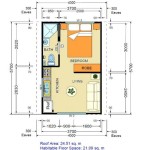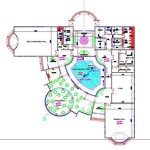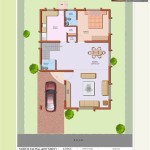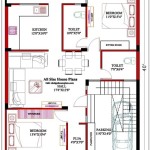Essential Aspects of Basement Floor Plan Examples
Designing a basement floor plan is a crucial step in optimizing the functionality and aesthetics of your home's lower level. Whether you're planning to convert your basement into a cozy living space, a home theater, or a practical storage area, a well-crafted floor plan will guide you in creating a space that meets your specific needs and preferences.
To help you get started, here are some essential aspects to consider when creating basement floor plan examples:
1. Purpose and Function:
The first step is to determine the primary purpose of your basement. Are you looking to create a home office, a family room, a guest bedroom, or a combination of these spaces? Once you have a clear understanding of the intended function, you can tailor your floor plan to accommodate those specific requirements.
2. Space Planning:
Efficiently utilize the available space by carefully planning the layout of your basement. Consider the size and shape of the room, the placement of windows and doors, and the location of key features such as a bathroom or kitchenette. Ensure there is adequate circulation space and that all areas are easily accessible.
3. Lighting Design:
Basements often have limited natural light, so it's essential to incorporate a well-thought-out lighting scheme. Consider using a combination of natural light from windows, recessed lighting, and task lighting to create a bright and inviting atmosphere.
4. Ventilation and Moisture Control:
Adequate ventilation is crucial to prevent moisture buildup and maintain a healthy indoor environment in your basement. Incorporate vents, fans, or a dehumidifier into your floor plan to ensure proper air circulation and prevent mold or mildew growth.
5. Structural Considerations:
If you're planning major renovations or structural changes to your basement, it's essential to consult with a professional engineer or architect. They can assess the structural integrity of the foundation, walls, and beams and provide guidance on any necessary modifications.
6. Building Codes and Regulations:
Before finalizing your floor plan, ensure it complies with local building codes and regulations. These codes may cover aspects such as egress requirements, ceiling heights, and electrical and plumbing installations. Failure to adhere to these codes could result in costly delays or fines.
7. Accessibility and Safety:
Basements can be prone to flooding or other hazards. Consider incorporating safety features such as sump pumps, flood vents, or fire extinguishers into your floor plan. Provide clear and well-marked egress paths in case of an emergency.
8. Storage and Organization:
Basements are often used for storage. Plan for ample storage space by incorporating shelves, cabinets, or built-in storage solutions. Organize your belongings efficiently to keep your basement clutter-free and functional.
By considering these essential aspects, you can create basement floor plan examples that effectively meet your needs and create a comfortable, inviting, and functional space in your home.

Basement Floor Plans Types Examples Considerations Cedreo

How To Plan For A Finished Basement Chiefblog

Basement Floor Plans Types Examples Considerations Cedreo

Basement Floor Plans How To Make A Good Plan For House Layout

Basement Floor Plans Types Examples Considerations Cedreo

Basement Floor Plans

How To Create A Great Living Space For Finished Basement Layout

Basement Floor Plans Types Examples Considerations Cedreo

Basement Finishing Plans Layout Design Ideas Diy

Choosing A Basement Floorplan Builders








